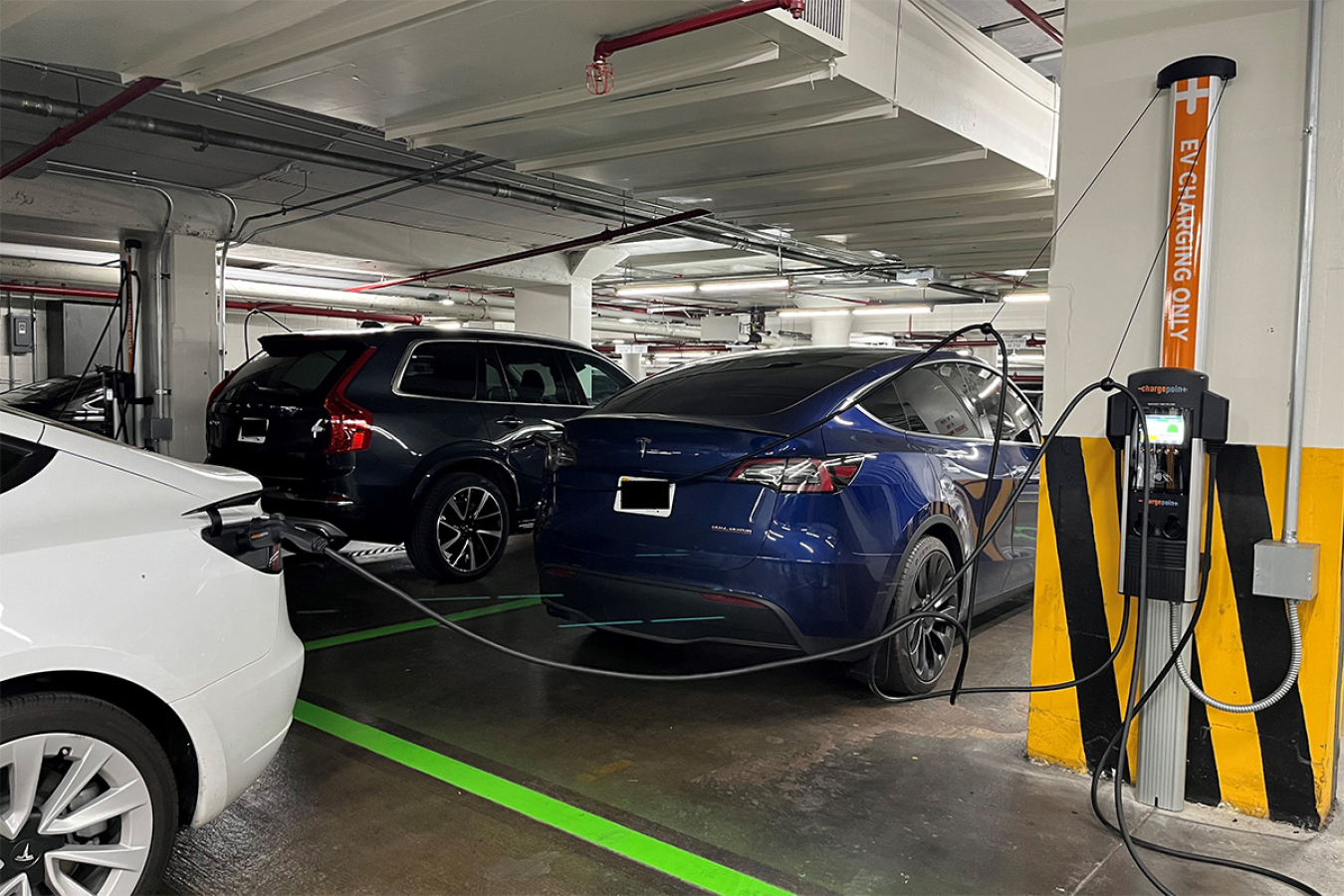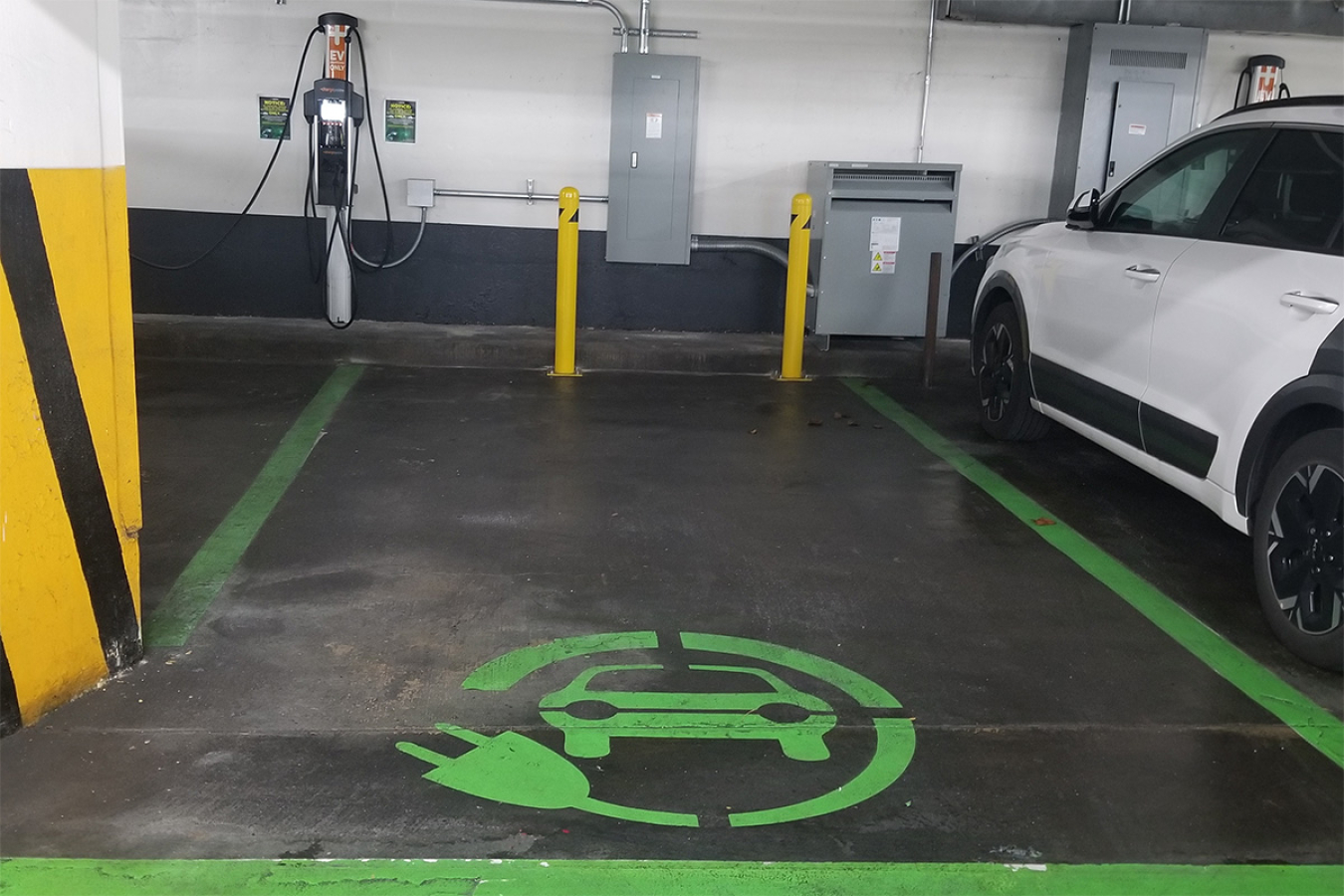DOE evaluated EV charging options and opted to lease 24 new charging ports in the Forrestal parking garage.
Federal Energy Management Program
November 8, 2024The U.S. Department of Energy (DOE) fast-tracked 24 new leased charging ports in the Forrestal building parking garage, enhancing the efficiency and sustainability of fleet operations and advancing the agency's decarbonization goals.

Project Background
In 2022, DOE upgraded its electric vehicle (EV) charging infrastructure at the Forrestal garage, leveraging a cost-effective leasing strategy that futureproofed its operations, supported fleet electrification, and aligned with decarbonization goals.
Built in 1969, the 1.7-million-ft2 building houses DOE staff in Washington, D.C. A natural target for decarbonizing the federal building portfolio, the sprawling office complex has undergone multiple energy efficiency retrofits over the past three decades.
To support charging for the increasing number of zero emission vehicles (ZEVs) in its fleet and provide on-site charging for its employees, DOE wanted to expand the number of EV charging stations, including replacing two outdated, malfunctioning units.
The big question at the outset was how to get the project across the finish line most efficiently and cost-effectively. The Forrestal garage was fortunate to have the electrical infrastructure capacity to support the increased load from the EV charging stations. That existing electrical infrastructure helped to keep costs manageable and the project feasible.

Project Outcomes
Based on the analysis, DOE opted to proceed with leasing the charging stations. Forrestal's 24 new Level 2 charging ports are now online, enhancing the efficiency and sustainability of fleet operations, providing a benefit to employees who drive EVs, and advancing the agency's decarbonization goals.

